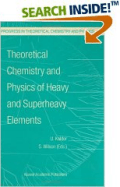|
|
|
|
Information about this site:
|
|
|
The author- or copyrights of
the listed Internet pages are held by
the respective authors or site
operators, who are also responsible for
the content of the presentations.
|
|
|
To include your website to the
Internetchemistry directory, please use
our
registration form or
send us an
eMail. |
Citation: |
www.internetchemistry.com/chemical-elements/copernicium.htm |
Entries: |
29 |
Topic: |
Copernicium, Cn, Element 112 (Ununbium) |
Keywords: |
Chemistry, physics, properties, data, chemical, element, transactinide, compounds, reactions, Ununbium, Uub, Copernicum, Copernicium, Cp |
Update: |
16.05.2013 00:00:00 [link check] |
|
16.05.2013 [site update] |
Chemistry information
not found? Try this form: |
|
|
|
Related Books and Scientific Literature: Copernicium:
|
|

|
U. Kaldor, S. Wilson
Theoretical Chemistry and Physics of Heavy and Superheavy Elements
Quantum mechanics provides the fundamental theoretical apparatus for describing the structure and properties of atoms and molecules in terms of the behaviour of their fundamental components, electrons and nuclei. For heavy atoms and molecules containing them, the electrons can move at speeds which represent a substantial fraction of the speed of light, and thus relativity must be taken into account. Relativistic quantum mechanics therefore provides the basic formalism for calculating the properties of heavy-atom systems. This book provides a detailed description of the application of relativistic quantum mechanics to the many-body problem in the theoretical chemistry and physics of heavy and superheavy elements. Recent years have witnessed a continued and growing interest in relativistic quantum chemical methods and the associated computational algorithms which facilitate their application. This interest is fuelled by the need to develop robust yet efficient theoretical approaches, together with efficient algorithms, which can be applied to atoms in the lower part of the Periodic Table and, more particularly, molecules and molecular entities containing such atoms. Such relativistic theories and computational algorithms are an essential ingredient for the description of heavy element chemistry, becoming even more important in the case of superheavy elements. They are destined to become an indispensable tool in the quantum chemist's armoury. Indeed, since relativity influences the structure of heavy atoms in the Periodic Table, relativistic molecular structure methods may replace in many applications the non-relativistic techniques widely used in contemporary research.
Springer; 2003
|
Internetchemistry ChemLin © 1996
- 2013 A. J.
|



